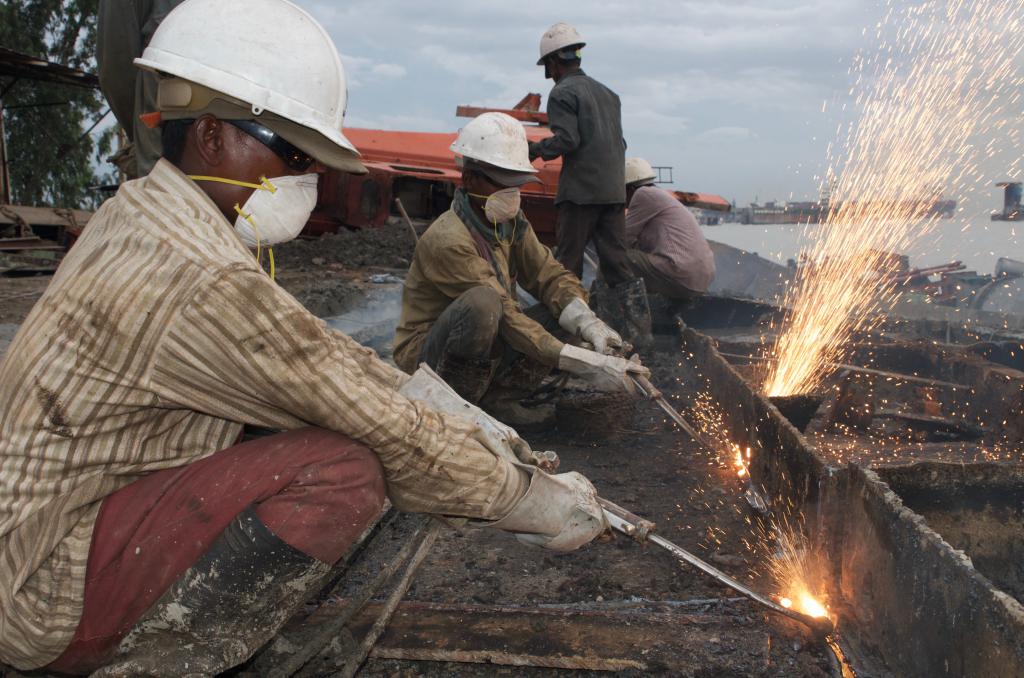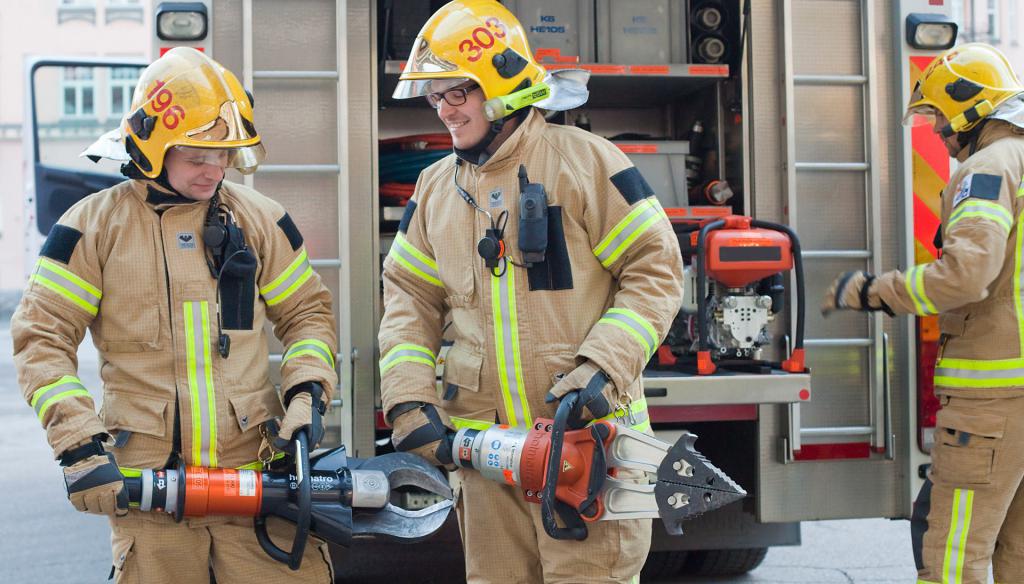Many people are forced to work in enterprises where there is a danger to the life or health of citizens. Therefore, additional payment is required for harmful working conditions. It is represented not only by the payment of funds, but also by various preferential working conditions. Compensation depends on the particular employment of a citizen.
Legislative regulation
Payment of harmful working conditions under the Labor Code of the Russian Federation is mandatory, and it applies to citizens who work in adverse conditions. This procedure is additionally regulated by some other legislative acts:
- Federal Law No. 426, on the basis of which an assessment is made of the working conditions of citizens, which makes it possible to determine whether they are harmful and dangerous;
- letter of the Ministry of Labor No. 15-1 / OOG-486, which describes the possibility of people receiving certain compensation when working in adverse conditions.
Thus, it is precisely these legislative acts that employers should focus on when calculating the salaries of their employees.
What is a hazardous condition?
Initially, you need to figure out which conditions are considered harmful. These include:
- hygiene requirements are not respected at workplaces, therefore, a negative impact is exerted on the body of workers and their unborn children, as well as on the capacity of citizens;
- adverse physical parameters, such as increased or decreased humidity, low or high temperature, exposure to electromagnetic radiation or regular vibrations;
- chemical influences represented by work with enzymes or hormones, various reagents or other chemicals;
- biological factors, for example, the effect on the body of various bacteria that are pathogenic;
- labor nuances represented by irregular working hours, significant mental stress or a high probability of injury.

All of the above conditions are non-standard and dangerous, therefore additional payment is required for harmful working conditions. It is usually appointed by the companies themselves, but if they refuse to voluntarily comply with legal requirements, then it is possible to apply to the labor inspectorate for the employees themselves. For the payment of funds a special provision on remuneration of labor is formed at the enterprise. Harmful working conditions must be documented.
Types of production with harmful conditions
Federal Law No. 426 contains the main types of production, which require additional payment for harmful working conditions. These payments are required in companies specializing in:
- coal or mining;
- metallurgical production;
- geological exploration or geodesy;
- earthenware production;
- the creation and use of a variety of abrasive substances;
- glass production;
- microbiology;
- electric power industry;
- the manufacture of various hydrometers or similar devices;
- oil or chemical industry.
All people who work in the above areas, on the basis of legislative acts, are required to receive additional payments, benefits and compensations from the employer.

Types of labor conditions
Payment for harmful working conditions completely depends on which category these conditions belong to:
- optimal, represented by the first special class;
- permissible - 2 class;
- harmful, which are the third class and consisting of 4 separate subclasses;
- dangerous - grade 4.
Compensation for work in hazardous working conditions at higher rates is used in relation to the third and fourth grade.
How is harmfulness detected?
The production process is accompanied by the emergence of an employment relationship between the employer and employees. An official contract is drawn up between them, and its conditions completely depend on the working conditions. If they can cause significant harm to the health and even the life of a citizen, then this is prescribed in the agreement. The need to transfer compensation to employees for such factors is taken into account.
The employer must monitor the correctness of the drafting of such an agreement, therefore they themselves determine the harmfulness, for which a special commission is convened, consisting of highly specialized specialists.

The harmfulness is determined by sequential actions:
- The petition is initially sent to the labor inspectorate, on the basis of which the commission is required to carry out the work;
- necessary documents on the activities of the enterprise are transferred to this institution;
- with the help of the order, a commission is formed, the specialists of which will be engaged in assessing the existing conditions;
- after the assessment, a conclusion is created by the commission members;
- this document prescribes the classiness of each place, recommendations with which you can reduce the harmfulness, as well as the rules for introducing these tips into the production process.
If it is revealed that a particular workplace has a specific hazard class, then this fact must be indicated when concluding a contract with any new employee.
What compensation is offered?
Firms issue a special regulation on remuneration. Harmful working conditions should be paid in a larger amount than standard work. Therefore, the TC provides several exemptions for people working with such factors:
- reduction in the number of working hours, so no more than 36 hours are allowed to work per week;
- additional paid leave is provided for which employees can count on annually, and it can not be less than 7 days;
- pay for harmful working conditions increases, therefore 4% of the salary established by the contract is additionally paid;
- people who work at such enterprises can count on pension benefits;
- treatment and procedures intended for recovery should be paid only by the enterprise, therefore they are free for the citizen;
- consumables are given at work designed to reduce harmfulness, and this includes workwear or various means for disinfection.
The sizes and types of remuneration in hazardous and harmful conditions are determined by the direct manager of the enterprise, but he must rely on the information available in the Labor Code. It is only allowed to increase the amounts indicated in the articles of this code.
In some regions, special rates are generally set, which are applied when working in adverse environmental conditions.

Features of registration of additional vacation
Each person working in a complex production can go on additional leave. It is fully paid. Payment of additional leave for harmful working conditions is made in the same amount as the main leave.
If the employer refuses to provide additional days of rest for the employees, then they can file a complaint with the labor inspectorate or the court. The same applies if vacation pay for harmful working conditions is not paid.
Is it possible to refuse compensation?
Each employee can refuse various additional compensations represented by the issuance of milk or a decrease in working hours. To do this, he compiles a special written application on the basis of which, instead of these privileges, he can receive a monetary refund.
Compensation provided is not subject to taxation, but insurance premiums are levied on them. If it is possible for an enterprise to reduce or completely eliminate harmful conditions, then after the implementation of these actions compensation is no longer assigned.

Some enterprises offer not only increased wages for harmful working conditions, but also an additional surcharge, which is personally determined by the employer. These may include compensation for non-pecuniary damage to employees, as they realize that they are deliberately destroying their health through work in such a company.
Surcharges, unlike compensation, are not indicated in the employment contract, therefore they are subject to personal income tax.
Compensation Procedure
Additional payment for harmful working conditions is certainly fixed in the labor contract upon its conclusion. Its size depends not only on information from the TC, but also on the financial situation of the company itself. It also takes into account in which area the company operates. Moreover, the results of the evaluation carried out by the commission are important.
Each workplace has a specific level of hazard and safety, which affects the amount of compensation. Includes additional wages in hazardous and harmful conditions in the wages of the employee.

What to do if compensation is not paid?
Some negligent employers do not increase the remuneration of citizens working in dangerous and harmful conditions. At the same time, workers themselves can help ensure that compensation is awarded. To do this, contact the labor inspectorate. The organization must collect documentation:
- correctly formed statement;
- a work book, which indicates where the citizen works;
- evidence of work in hazardous conditions.
The application must indicate on the basis of which the citizen assumes that he really needs an increased payment. It describes all the conditions of its operation, for example, low temperature, the possibility of physical damage or other factors.
Based on the transferred documentation, an inspection is carried out by employees of the labor inspection. For this, a commission of highly specialized specialists is appointed who analyze the work of all employees of a particular company. If really dangerous working conditions are revealed, then the employer is held administratively liable in the form of fines, and often even criminally liable. He is obliged to assign a certain hazard class to each workplace, after which changes are made to labor contracts, on the basis of which the establishment of increased pay is carried out. Harmful working conditions in this case are offset by cash.
How is the size of the surcharge determined?
Compensation is established by sequential actions:
- Initially, a certain hazard class is assigned to the workplace;
- the established degree of impact on the human body is translated into special points;
- the duration of exposure to negative factors is determined;
- Additional payments are calculated.
Many companies use the point system, and the calculation rules are set in the organization’s internal documentation. It describes in detail what the counting algorithm is.
Features of additional insurance premium rates
The Federal Law No. 173 indicates the possibility of inclusion in the seniority of a citizen of the periods during which he worked in hazardous production. Due to these time intervals, it is possible to retire until the person reaches the appropriate age.

To include such grace periods, the following requirements are taken into account:
- citizens should work in hazardous production after 2012;
- conditions are equivalent to 3 or 4 class of harmfulness;
- a citizen is officially employed, so the employer must pay insurance premiums for him.
Interest depends on the class of harmfulness and other parameters. Tariffs are set in Art. 428 Tax Code.
Responsibility for no surcharge
If the employer does not pay additional funds for harmful conditions or incorrectly calculated them, then he bears administrative responsibility, since he does not pay the due salary to employed specialists. Responsibility measures include:
- employees can suspend work in order to protect themselves from harm, and it is optimal to use this opportunity after the delay in payment of salaries exceeds 15 days;
- the company is held liable, therefore, for each day of delay under Art. 236 TC interest is charged equal to 1/150 of the Central Bank rate;
- fines are paid on the basis of Art. 5.27 Administrative Code;
- responsible persons of the company can be prosecuted for serious violations, therefore they are assigned forced labor, they are removed from their posts, they pay fines, and often even imprisoned.
Thus, all people working in hazardous industries can count on additional pay. It is assigned by the employer taking into account the hazard class. If companies violate the law, they may be held liable for different measures. Workers themselves may complain to the labor inspectorate for violations.
